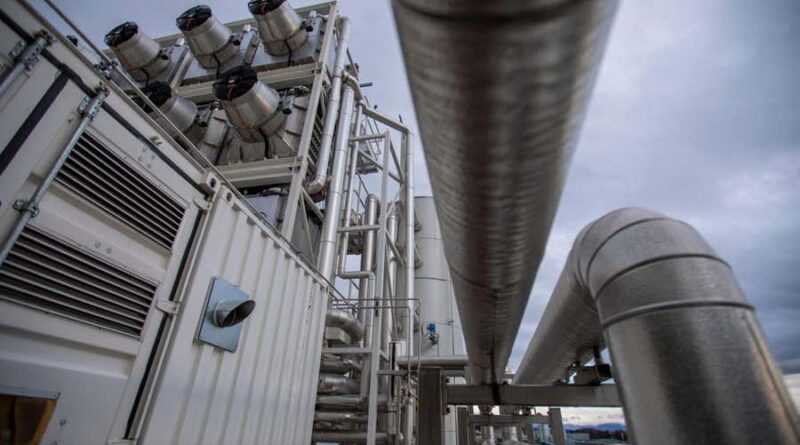Light-sensitive molecules could make carbon capture more efficient
Molecules called photoacids could offer a more energy-efficient way to release carbon dioxide captured from the air in order to store or reuse it.
Light-sensitive molecules called photoacids could make the process of removing carbon dioxide from the atmosphere more energy efficient. Researchers are now devising ways to make photoacids more practical to use.
This could be especially valuable for direct air capture (DAC) systems, which blow air over carbon-capturing materials called sorbents. Existing systems require a large amount of energy to separate pure CO2 from sorbents in order to store or use it elsewhere. This poses a major barrier to using DAC to remove billions of tonnes of CO2 from the atmosphere each year. “That step is hitting a wall,” says Anna de Vries at ETH Zurich in Switzerland. “Every single direct air capture company is struggling and trying to make the most efficient process.”
Adding photoacids to the sorbents could help. When illuminated, each photoacid molecule changes shape and releases a proton, making the solution more acidic. This “pH swing” frees CO2 from the sorbent-photoacid mixture. When the lights go out again, the photoacids and the solution’s pH revert, allowing the sorbent to absorb CO2 once more. Then the cycle can be repeated.
Usually heat or pressure is used to release the CO2, but using sunlight or lamps could slash the energy needed for this step, says de Vries, who aims to halve DAC’s energy requirements. However, photoacids tend to be unstable and not very soluble in water, which limits the efficiency with which they can release CO2.
De Vries and her colleagues added various solvents to a photoacid solution and found a mix that makes photoacids more soluble and extends their lifespan from just a few hours to nearly a month.
In another approach, Uvinduni Premadasa at Oak Ridge National Laboratory in Tennessee and her colleagues found a different photoacid that can maintain its response to light longer and produce more acid, enabling it to release CO2 from a solution more efficiently.
Greg Mutch at Newcastle University in the UK says these are “elegant and innovative” solutions. However, he says a scaled-up system could face challenges, for example, losing solvent to evaporation in the air.
While these researchers focused on capturing CO2 from the atmosphere, the first larger-scale test for photoacids may happen in water. A start-up called Banyu Carbon in Washington State is using photoacids to separate CO2 from seawater, with plans to install a system that can remove one tonne of CO2 per year in 2024.
In this system, photoacids are exposed to light, and the resulting acidity is temporarily transferred to seawater, causing the water to release CO2 absorbed from the atmosphere. Alex Gagnon, the company’s co-founder, says this cuts the energy needed to separate out CO2 and eliminates the need to power fans.
Source : newscientist.com




